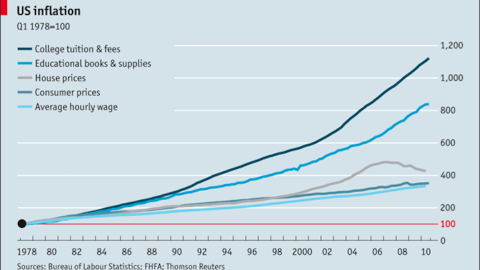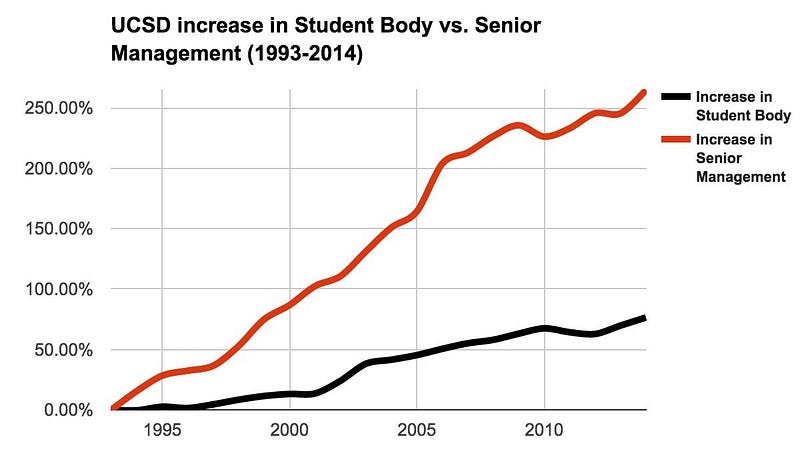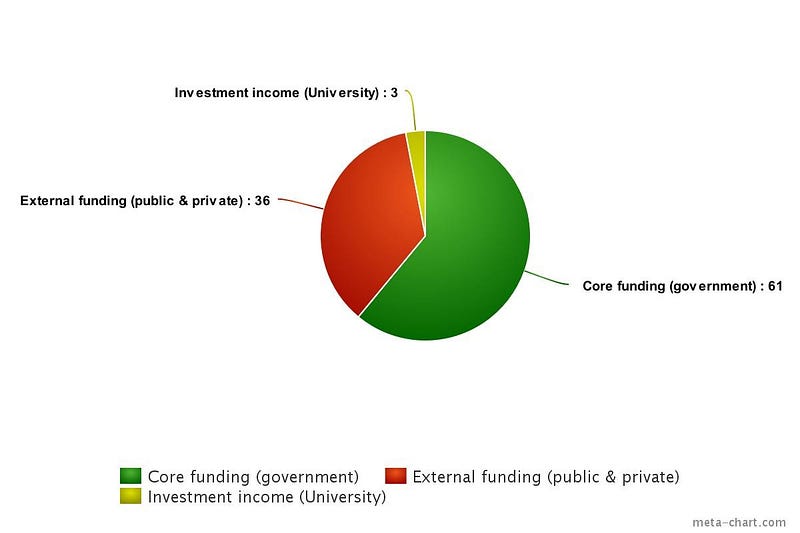Why college is so expensive, and how to fix it

Tuition costs have risen faster than any other set of costs in the USA. There’s a way to combat it, but we have to be brave.
“When we make college more affordable, we make the American dream more achievable.” –Bill Clinton
It’s no secret that a college education in America is more expensive than it’s ever been. With tuitions at many Universities now exceeding $40,000 per year, even a plethora of financial aid opportunities and scholarships leave the average student approaching or upwards of six figures in debt as a result of their four year degree. At the same time, while tuitions have skyrocketed, the number of full-time, tenured (or tenure-track) faculty have barely increased at all, while the number of part-time adjuncts (usually without benefits) have made up the gap. You don’t need to be a math professor to know that this doesn’t add up: students are paying more than ever, while there hasn’t been a real increase in the number or salary of full-time professors. It’s no secret where all the money has gone, though. It’s gone to administrative overhead, as that’s where the majority of “growth” in colleges have been.

Recently, the chair of my department asked me how to fight this broken system. Rather than coming up with a plan from scratch, it’s extremely useful to consider what just happened over in Europe at the flagship university in the country of Finland: the University of Helsinki. Like practically all colleges and universities in the world, the University of Helsinki has seen stagnation in full-time, tenured (and tenure-track) faculty jobs, small and slow wage increases, a rise in part-time instructors, and a huge jump in its costs. Unlike colleges and universities in America, however, the severe, continual increase in expenses haven’t been bankrolled by increases in tuitions, as they have all across the United States. Instead, University of Helsinki is a tuition-free school, and relies heavily on core funding from its government to operate.

As the government’s budget changed, so did the University’s funding: it was recently called on to reduce its annual expenditures by just over 100 million Euros over the next few years, or about 15% of their total budget. The reduction in funding will escalate every year, and take full effect in the 2019–2020 academic year. If you were the University of Helsinki, what would you do? What or whom would you cut?
As it turns out — and this isn’t abnormal — a full two thirds of the University’s annual expenditures are spent on salary for employees, including faculty, staff and administration. So it’s no surprise that the majority of the cuts will affect employees: by the end of 2020, the University is anticipating a total reduction in its workforce of 980 people. But here’s the good news and the smart lesson: how those 980 employees are broken down.
- 200 employees will retire, with no one hired to take their place. Of the retiring employees, only 60 are teaching and research positions; the other 140 are non-academic (support and administration) positions.
- 210 fixed-term (adjunct, visiting or other year-to-year) positions will be eliminated and not renewed, 160 of which are academic (teaching and research) positions with 50 non-academic ones.
- And 570 employees will be terminated, which include 75 teaching and research staff and 495 non-academic administration and staff.
This means that of the 980 positions to be reduced, only 135 of them — or 14% — are full-time, long-term academic faculty, nearly half of whom are retiring. On the other hand, 635 long-term support and administration staff members are being reduced: 65% of the total workforce reduction. While many will claim that it’s always a negative when support for education is cut, I look at the silver lining here: the workforce reduction that University of Helsinki chose showcases exactly what makes a college or university great.

It isn’t the facilities; it isn’t the buildings; it sure isn’t the administration. All you really need for a great college/university is great faculty, great students, and minimally sufficient everything else. Sure, we all love great facilities, great support and great administration, as in many ways they empower faculty and students with the time and resources to be great themselves. But realistically, the huge number of high-quality, capable, well-qualified potential faculty has led to their devaluation, as we’ve shown that we’re willing to workfor low pay, with low job security and with few benefits. Meanwhile, the devotion to the goal of “getting a college education” has led students (and their families) to willingly pay ever higher and higher tuitions, for educations that are no greater in quality or value than the education their parents’ or grandparents’ generation paid for.

So what’s the solution? Join forces. Form a student-faculty union, and put pressure on the colleges themselves to move away from a model where the administration and the board of directors are the sole decision-makers here. Students and faculty have the most powerful weapons available at their disposal: to put their hands in their pockets and simply do nothing. If you want to change the system, you have to be willing to risk the security of the table scraps you’re receiving. Students: why should you pay so much for a bloated administration and for so little in terms of actual education? Faculty: why should you accept the ever-increasing work burdens for stagnant pay and colleagues who aren’t permanently employed? If we work together, we have everything to gain. We can fix the college/university system. We just need to be willing to work together to cut out the chaff while keeping the wheat.
The opinions expressed here are Ethan Siegel’s alone, and do not reflect any person or organization with which he is or ever was affiliated.
This post first appeared at Forbes. Leave your comments on our forum, check out our first book: Beyond The Galaxy, and support our Patreon campaign!





